Picture Detroit today and the images that probably come to mind are of "ruin porn" (the now infamous term for beautifully shot photos of dilapidated buildings); urban exploring (the new craze of creeping around abandoned complexes as seen in Jim Jarmusch's new film Only Lovers Left Alive) and foreclosure frenzy (there are now nearly 80,000 empty homes to be torn down or fixed up in Motor City). Sadly, last year, another grim label – Broke – was stamped on Detroit's languishing landscape, when it became the largest American city ever to file for bankruptcy.
But there is another side to the city's desperate times. In its daily battle to stave off extinction, "the D", as it is affectionately known, has become a fascinating place to visit. This is a period when it's possible to get a glimpse of one of the world's edgiest, most exciting, urban enclaves – a place that is looking inventively and enthusiastically toward the future.
This mood is reflected in Jarmusch's movie, with its moody shots of the city and the prediction from Tilda Swinton's psychic vampire, on seeing the city for the first time, that "this place will rise again … this place will bloom".
Like in any city that has nowhere to go but up, it is the artists, activists and entrepreneurs who have created opportunity in adversity, pooling their creative resources and working together in an effort to bring the city back from the brink. And the roots of Detroit's revitalisation are now becoming visible. With one-third of the land mass in Detroit now vacant, the development plan for the city has been to first concentrate on building back "density" (for which read, "population") in four distinct neighbourhoods – all less than a 10-minute drive from one another – Downtown, Midtown, Corktown and Eastern Market.
Downtown
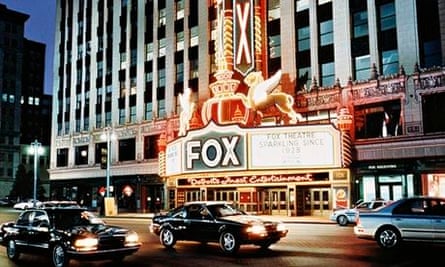
So far, the most conventionally successful of these density-improvement projects has been in the Downtown area, which is seeing a resurgence of big business (two years ago, Chrysler joined General Motors by moving its executive offices into the area), as well as an influx of residential tenants. Its Theater District – the second-largest in the US after Broadway – is also thriving, with big stage productions at the Fox Theatre (the largest surviving 1920s movie palace in America) and concerts at the Fillmore Detroit next door, which was built during the same period.
Corktown
It is in the three other neighbourhoods that a visitor can really experience the "authentic" new Detroit, and the crop of interesting enterprises that are popping up. Start with Corktown, a quaint area which is the city's oldest neighbourhood and got its name from Irish migrants from County Cork. Federal-style (late 18th and early 19th-century) detached houses with welcoming front porches line the residential streets, but it is on the main street, Michigan Avenue, that colourful buildings house many of Detroit's newest dining and drinking spots. The city's most popular rib joint, and the heart of the neighbourhood, is Slows Bar BQ restaurant at number 2138, which does a signature macaroni cheese to accompany hearty plates of pulled pork, chicken and sliced brisket.
Phillip Cooley, 35, the owner of Slows, is one of the heroes of emerging Detroit. In the past eight years alone, Michigan-born Cooley, who once worked as a model, has not only opened Slow's, but also started a community business incubator called Ponyride and founded the Roosevelt Park Conservancy, an organisation that is working to save the land in front of the nearby, and now crumbling, Michigan train station (by far the most photographed ruin porn in Detroit). His efforts have more than paid off in terms of kickstarting the area's regeneration.

Next door is Astro Coffee, with a floor-to-ceiling chalkboard where patrons can read the latest offerings, as well as the sourcing of all the ingredients, much of it local, from beans to baked goods. The owners of Astro, husband and wife Daisuke Hughes and Jessica Hicks, did not learn their trade locally, however, but in London, where they met working at Monmouth Coffee Company. When I asked Hughes why they started their business in Detroit in July 2011, he said, "There is a culture of caring here, which means the people who are succeeding are involved in passion projects, whether it is about their product or the city. For us that was unique and inspiring."
Next door to Astro is the year-old Sugar House – decorated in the style of a prohibition-era bar. As well as 100 classic cocktails, listed alphabetically from an absinthe frappe to a zombie (all for under $14), it serves craft punches by the bowl for parties of four to six and small plates to soak up the alcohol.
For something more substantial, hop over the road to the Mercury Bar, a retro diner selling modern burgers, such as the Southwest Detroit, a chorizo slider on top of a beef patty with jalapeños, tortilla strips, avocado, munster cheese and pickled spiced carrots ($8). Further up the street at number 2445 is the first distillery to open in Detroit since the prohibition era. At Two James Spirits, pull up a stool at the round tasting bar, and try a Corktown flip (TJS bourbon, Detroit Beer Co Cacao stout, blackstrap molasses, an egg, and mole bitters).
The good news is that there is also a unique place to sleep in this area, though booking ahead is essential. Honor & Folly (honorandfolly.com, one bedroom $165 a night, both bedrooms $215, plus a sofabed for children) is a home away from home with a fully stocked kitchen and a cosy living area decorated with vintage and locally crafted furniture.
Not coincidentally, the owner is Meghan McEwan, sister-in-law of the aforementioned Phil Cooley. Though not a native Detroiter herself, after living here for more than a decade, she is now a true convert. "Detroit is a city like no other these days," said McEwan, whose two-year-old mini-tavern rarely has a room free. "Everyone here is doing something independent because they can afford to, unlike in other cities. Anything feels possible here."
McEwan is bringing up three small children in the inner city. Indeed, it is in this neighbourhood that one can see the ever-improving skyline of Detroit up ahead, and picture – hopefully, in the not-too-distant future – a pedestrian path connecting the two areas.
Midtown
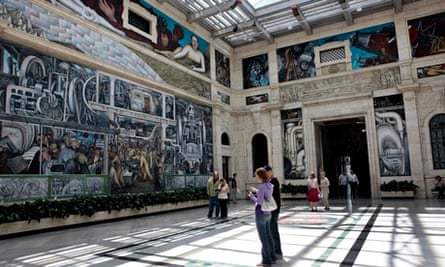
If Corktown is Detroit's hipster heartland, Midtown – where majestic institutions line Woodward Avenue – is its cultural centre. The venerable Detroit Institute of Arts , whose collection is so valuable there has been a debate over whether some works might be legally sold off to help pay the city's debts, is full of art by all the top masters, from Degas and Rembrandt to Van Gogh and Matisse. A highlight is the Diego Rivera courtyard, where the Mexican painter made one of his most famous murals, The Detroit Industry, now available for viewing with iPad explanatory accompaniment.
An easy walk from the DIA is Mocad (the Museum of Contemporary Detroit) in the Sugar Hill District, a former jazz area that's also home to the N'Namdi Center for Contemporary Art. George N'Namdi can usually be found presiding over this sweeping space, always dressed in one of his signature hats, ready to show visitors one of the finest collections of African-American art in the world, as well as his showcase exhibitions featuring emerging artists. Next door, vegetarian restaurant Seva serves amazing yam fries, a tofu pad Thai and a club sandwich with tofurkey, avocado and smoked coconut.
One thing outsiders quickly notice is missing from Detroit is major US retailers. Instead of Gap and Victoria's Secret, there are one-of-a kind shops selling local products, particularly on pedestrian-friendly West Canfield Street. Here, at number 441, a new Detroit brand called Shinola has its flagship store (there's another in New York) for high-end watches, leather goods and bicycles.
Alongside it is the charming City Bird, a potpourri of a retail store, and its sister store Nest, which together serve as studio, gallery and retail outlet for Detroit-themed goods. Around the corner on Cass Avenue, the Dell Pryor Gallery sells beautifully made local jewellery and local art, with the elderly owner usually on hand to assist and tell stories about the city she has loved and worked in for decades. Thanks to Wayne State University, Midtown bustles with cheap bars, cafes and bookshops, catering to the students everyone hopes will stay in the city and stave off years of brain drain.
Eastern Market

Food meets art in Detroit Eastern Market, one of the oldest outdoor venues of its kind in the country. Every Saturday morning (spring to autumn), sheds bustle with shoppers buying direct from Michigan's farmers, meat suppliers and culinary artisans. Unlike the other districts, where under-population is still glaringly apparent, here you will fight for space in front of the vendors. To try some of the best fruits of Detroit's community garden scene (there is an "adopt a lot" free programme here where you can establish an orchard, garden or community project on three empty lots), grab a meal at the Russell Street Deli. Its soups, salads and sandwiches include greens and herbs from both the Grown in Detroit and Brother Nature gardens, among others, and even the pickles come from a local producer.
Hidden in the alleys surrounding the market are old lofts and warehouses where you can find amazing Detroit artefacts and antiques for sale, as well as numerous galleries. The Red Bull House of Art (tinyurl.com/oewc989) supports a year-round incubation programme, allowing artists to create and exhibit their work in this cavernous space. And a letterpress studio called Salt & Cedar , founded by a husband-and-wife team, offers "Book and Bread" dinners (gourmet food followed by a bookbinding session).
In the scruffy lofts surrounding the market, unseen artists are at work, occasionally opening their doors to the public. And if all goes to plan, it will soon be possible to stay here too, when Collision Works, a community-minded hotel built from reclaimed shipping containers, opens later this year.
"We call it a make and play space," says founder Shel Kimen, who tested her prototype by setting up a container in the market with Wi-Fi, pop-up retail spots, hot-desking facilities and storytelling sessions, to foster "creativity, collaborations and connections".
Finally, no trip to Detroit is complete without a stop at The Heidelberg Project, an art installation in the McDougall-Hunt neighbourhood that grew up in response to the overwhelming decay artist Tyree Guyton saw around him. It was created in 1986 and is a bright symbol of how art can transform lives, with a series of houses decorated with bright paint and salvaged items. Hailed worldwide, the project has seen a series of arson attacks in the past year – a reminder no one needed in this struggling city that there are many challenges to overcome before it becomes the democratic, dynamic new Detroit it wants to be.
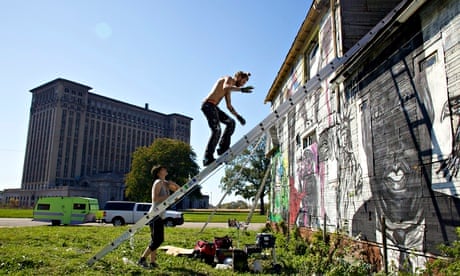
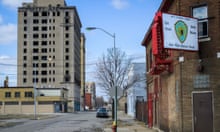

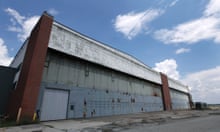

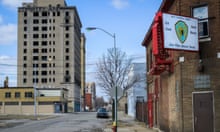
Comments (…)
Sign in or create your Guardian account to join the discussion